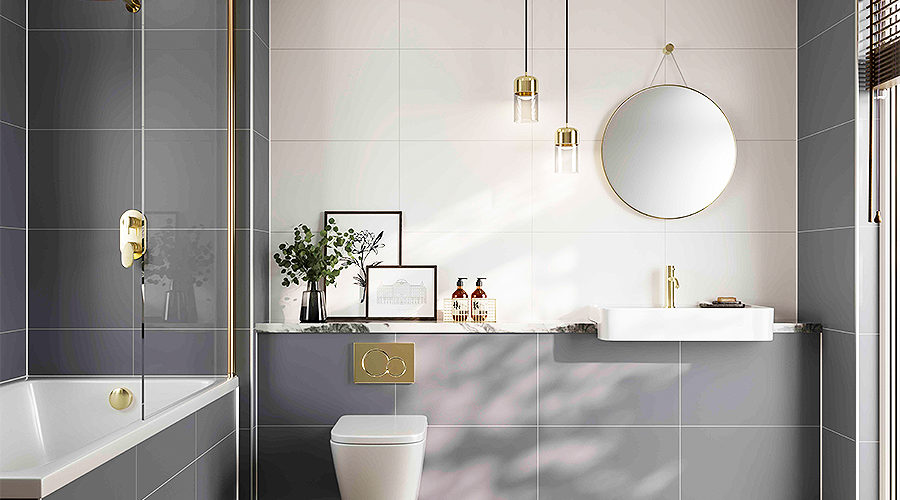Lidia Cetrangolo, Marketing Manager at Multipanel, discusses why sustainable specification doesn’t have to impact style, speed and durability.
Multipanel
Whilst the nation’s net-zero target of 2050 may seem far in the distance, each year it moves closer and closer, putting additional pressure on the already-stretched industry to take necessary action to ensure goals are met.
Whilst the Government’s initial target of building 300,000 new homes a year has since been recanted as advisory, demand remains strong, meaning there’s a need for more ‘out-of-the-box’ solutions.
The whole ethos of net-zero 2050 is ‘Build Back Greener’ and at the centre of this must be sustainable specification; choosing a product for its eco credentials rather than its price tag. With a focus on value rather than cost, the right products and materials can be integrated into building projects; especially high-volume schemes where time is, more than ever, of the essence.
Modern building materials
Whilst they’ve been around for many years, bathroom wall panels are deemed as a fairly modern building material usually reserved for forward-thinking developers. Yet, increasingly, the wider industry is cottoning on to the often-overlooked benefits of the product.
Exceptionally quick to install, they can support tight installation windows. This is important, as housebuilders are under pressure to decrease time spent on building and installation, whilst ensuring that corners aren’t cut and that quality isn’t compromised. Ready for occupation after just 24 hours, they completely eradicate the need for grout; fixed simply with adhesive.
Completely waterproof, they leave little room for mould and mildew build up, thus resulting in little to no need for maintenance, which is a key factor for consumers during the buying journey. Additionally, wall panels offer a range of consumer benefits beyond low maintenance, such as the range of stylish and attractive aesthetics that are available to suit every taste.
It’s this ‘fit and forget’ stance that the sector needs to adopt in order to tick both speed and sustainability boxes, otherwise we’re at risk of falling short of net-zero 2050.
Sustainable development
Meaning different things to various parties, what remains at the centre of sustainability is long term and, in some cases, long-term thinking needs to become short-term action.
For example, bathroom wall panels come with a 30-year warranty, are manufactured from recycled materials and are themselves recyclable; meaning that, if they are specified, they don’t technically have to be worried about again until after almost three decades.
Opting for a wall panel that uses sustainably-sourced materials will ensure that a bathroom project is as environmentally friendly as possible, too. Even if it’s just for a small downstairs cloakroom, using correctly-certified materials, like those with a Forestry Stewardship Council (FSC) emblem, can make a big difference.
The need for speed
Whilst the age-old ‘hare and the tortoise’ adage is still used to this day, there is a lot to be said for working quickly; especially when contract clauses dictate fines for overruns.
With little room for error during installation, opting for bathroom wall panels can claw back valuable time on a job. Bathroom wall panels can be installed approximately five-times quicker than traditional tiles, making the material a very viable option for compressed projects.
Quicker installation equals more time for other jobs, too, so there is the potential for labour requirements to be reduced through less labour-intensive fitting.
Pleasing everyone all at once
The calculation of housing targets minus delivery speeds plus sustainability times net zero divided by cost-of-living crisis equals a big headache, however, the industry must be accommodating of better collaboration in order to meet the multiple macro demands imposed.
Corners don’t need to be cut, rather business leaders need to be open-minded about what needs to be done and the journey options available in order to reach the desired destination. For too long, the supply chain has been too siloed; with parties focusing on their individual targets rather than collective success and changing that can be a useful step towards meeting a shared goal.
Joint venture development is often perceived as a useful model as it utilises best practices, policies, infrastructure or experience from multiple parties – could this, therefore, be the secret to unlocking the UK’s potential to deliver a juxtaposition of competing targets, such as building more homes more quickly, whilst increasing the sustainably of the process? With ESG being the new CSR, what’s the StSS (secret to speedy sustainability)?
Following CSR’s evolution into ESG, with the latter rightfully being more deeply embedded into an organisation’s policies and practices, how can speed and sustainability be co-delivered?
Two polarising terms, they simply need to work together in order to generate success. As with all housing developments, it’s a numbers game, whether that be units on the masterplan, value of the Section 106 contributions or number of local people employed. But put simply, to understand that choosing a product that is five-times quicker to install, 100% waterproof and requires zero maintenance over 30 years versus its traditional counterpart is a simple calculation to make.














